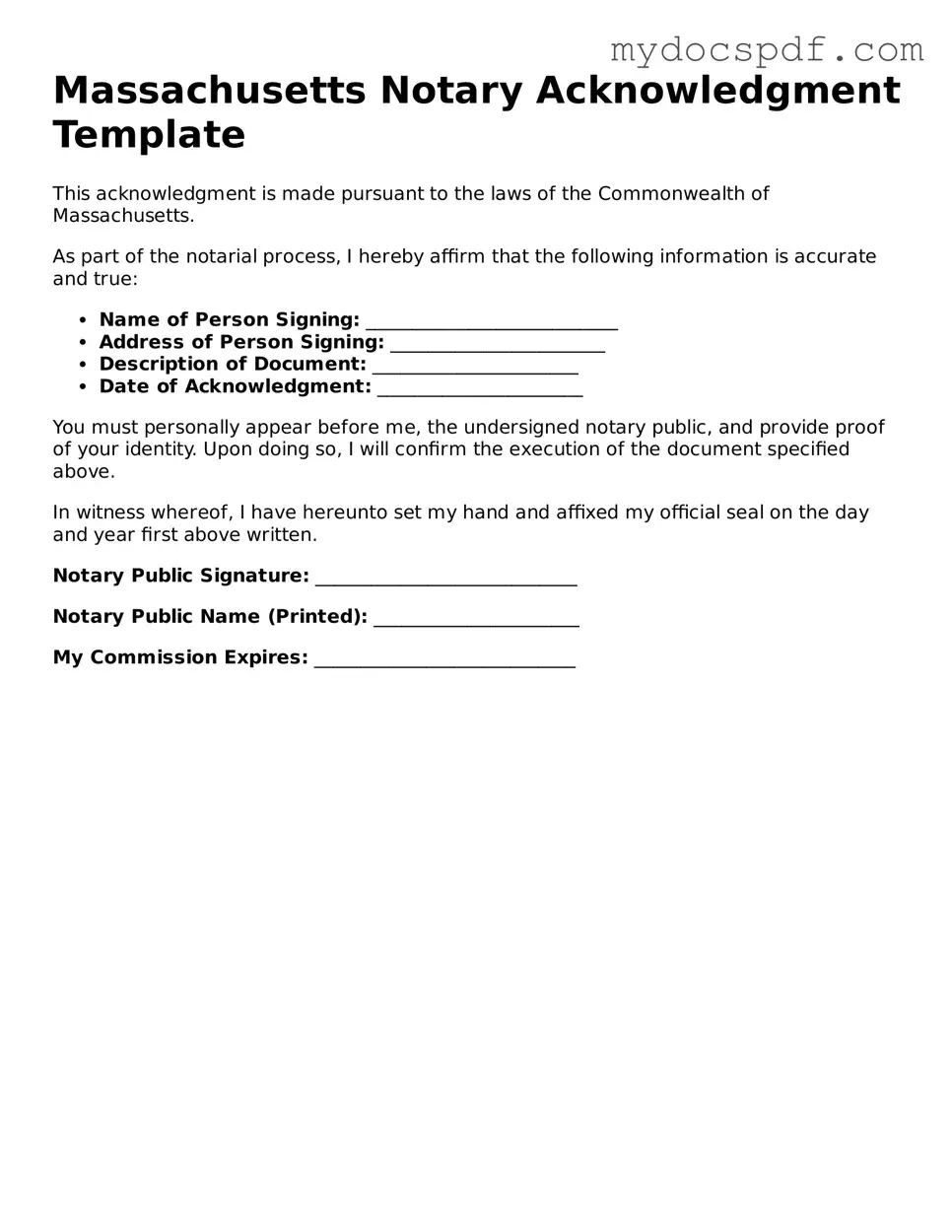Fillable Massachusetts Notary Acknowledgement Document
The Massachusetts Notary Acknowledgement form is a legal document that verifies the identity of a signer and confirms that they willingly signed a particular document. This form serves as an essential tool in various transactions, ensuring that agreements are authentic and binding. Understanding its purpose and proper usage can greatly benefit individuals and businesses alike.
Access Editor Here
